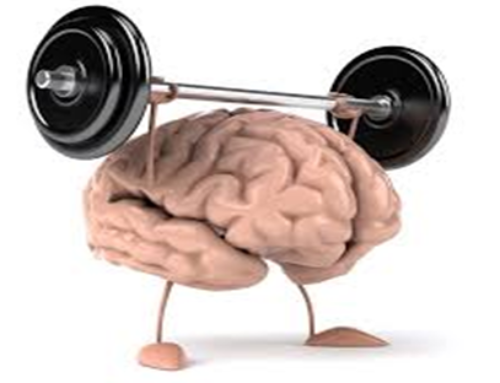What does reality have to say on the matter?
We have all thought of someone we know as pessimistic or optimistic, so we have a fair idea of what these terms mean but have you ever thought about what the real difference is? Often people use the ‘glass half full or glass half empty’ analogy but there is a lot more to it from a scientific stand point than you might expect. This article aims to look at the vast differences, how to practically apply it in your daily life, where you lie on the optimism/pessimism scale and how to change your attitude if you need to.
Firstly, let’s have a look at what we know. Extensive research has gone into the fields of depression, helplessness, optimism and pessimism. Esteemed psychologist Martin E. P. Seligman developed the theory of ‘learned helplessness’ which is widely respected among scientific psychologists.
Seligman demonstrated how the reaction of learned helplessness is acquired. A dog was placed in a shuttle box. Periodically, a tone was sounded, and shortly after the tone, the dog experienced a painful but physically harmless shock. At the onset of the shock, the dog whined and ran about. At one point, while the shock was still being administered, he happened to jump the barrier in the middle of the box. Immediately, both the shock and tone ceased. With successive trials, the dog jumped the barrier more and more quickly. Eventually, he waited quite calmly in front of the barrier, nimbly jumping over it as soon as the tone sounded and thus avoiding the shocks.
In the next phase of Seligman’s study, another dog was first placed in a restraining device, so that it could not move, and given a number of brief shocks. There was nothing the dog could do to escape or avoid these shocks. When this second dog was put into the shuttle box a day later, it initially acted much like the first dog. Quickly, however differences became apparent. Even if the second dog accidentally jumped the barrier, it never learned specifically to cross the barrier to escape or avoid shock, instead, it sat or lay passively, whimpering, until the tone and shock ended.
This reaction was also observed when similar testing was conducted on humans. So when people or dogs are exposed to shocks they cannot control, they learn helplessness. They decide that nothing that they do matters, and even when they are transferred to an environment where they can escape their shocks, they simply give up.
On the other hand, when people or dogs are exposed to shocks that they can control, they learn efficacy and escape more quickly when transferred to a different environment. They have been ‘inoculated’ against helplessness.
However, a third of the subjects who are exposed to uncontrollable shocks never become helpless. They never give up. Yet a tenth of the control subjects who received no training shocks are helpless from the start.
A key factor in how we behave in confronting situations and whether or not we are vulnerable to helplessness depends on the way we explain this to ourselves. This is called our explanatory style. It’s in the way we explain bad events, it’s the words we use when we fail. Our explanatory style stems from how we view the world and defines whether we are an optimist or a pessimist. Seligman identifies three dimensions to our explanatory style: permanence, pervasiveness and personalisation.
Permanence
“I’ll never be able to do this,” or “He is always annoying me.” These are classic lines used by someone who has a pessimistic style. They believe bad events will persist and always affect their lives. They use words like never and always, where as a person who has an optimistic style believe that bad events are temporary or one-off and tend use words like sometimes and lately. This self talk also affects the degree to which you are able to bounce back from defeat and failure. As Seligman explains, failure makes everyone at least momentarily helpless. It’s like a punch in the stomach, it hurts but the hurt goes away – for some people almost instantly.
For others, the hurt lasts and they remain helpless for long periods of time.
For the optimist, they believe that good events are permanent and bad events are transient. Because they believe that good events have permanent causes they try even harder when they succeed.
Pervasiveness
Try to think whether you make specific or universal explanations for bad events for situations. Universal explanations produce helplessness across many situations, where as specific explanations produce helplessness only in the troubled area. For some people, if one thing goes wrong, then it impacts every other aspect of their lives. It’s all consuming. This is called pervasiveness. For example, you may spill your coffee that morning. From then on you are in an unresourceful mood for the rest of the day and that impacts your work, your relationships and your overall happiness. Another good example could be that you’ve messed up your diet, so you believe you have ruined the whole diet and give up trying altogether.
For the optimist, they believe that bad events have specific causes and are localised to that specific event. This allows them to put a full stop after a mishap and move on without giving it another thought.
Personalisation
The third element relates to whether you internalise or externalise bad events or situations. Persoanlisation can usually reveal itself in two ways. The first is when you believe that you will never amount to anything and that all obstacles are there because of you. “Everything bad that happens to me is my fault” is a common statement from people in this situation. In fact when something goes right, people in this scenario refuse to take credit for it, preferring to assume they were just lucky on that occasion. The second is when you take negative interactions personally, like when someone is rude on the phone for example. People who blame themselves in these situations tend to have low self-esteem as a result.
For the optimist, they will internalise good events and externalise bad events. They will blame external sources for bad things that happen and by doing this they don’t lose self esteem when faced with a negative situation. On the other hand they also internalise good events. So because they believe that they cause good things to happen, they tend to like themselves better than people who believe good things come from other people or by circumstance.
Identifying our own explanatory style can help us to see how we view the situations we are faced with in our daily life and whether we can improve our own internal dialogue. Most people understand that having an optimistic attitude is an important part of being happy and successful. Having a positive outlook is easy when everything is going well, but unfortunately when we come across an obstacle, pessimism can come to the fore and short circuit our chances of reaching our goals. When we experience repeated traumatic events, those people with a pessimistic explanatory style are at serious risk of learned helplessness triggering a state of depression. Seligman suggests that most cases of depression are not biochemical or stemming from psychoanalytic causes but instead, they are habitual thought patterns of their explanatory styles that lead to learned helplessness.
This learned helplessness can not only affect mental health, it will undoubtedly contribute to poor physical health by neglecting diet, exercise, sleep and medication treatment because they falsely believe they have no power to change. Those with a pessimistic explanatory style also tend to have weakened immune systems. This means not only an increased vulnerability to minor ailments like colds and flu’s but also a less effective recovery from major health problems.
Even if these pessimistic thought patterns are not leading us down the path of clinical depression, they are certainly having a negative impact on daily life. That’s not to say that mild pessimism doesn’t have its uses, it does. It’s when we continually believe that misfortune is our fault, that it’s lasting and undermines everything we do, that it’s likely that we will receive more than our share of misfortune than if we believed otherwise. Pessimistic prophecies are self fulfilling.
The good news is that pessimistic personalisation, permanence and pervasiveness are all learned behaviours that can be unlearned over time by replacing them with more optimistic outlooks. Learned optimism can help to improve all areas of your life including your job, your family, your health and your personal achievements. Research says that changing the way we think about health has a massive impact on changing our health. Dr Seligman found that optimists catch fewer infectious diseases than pessimists do, they have better health habits, their immune systems work better and they live longer. One of the crucial steps to making physical changes within our body is to start by changing the destructive self talk of pessimism and embracing the skill of optimism.
People who tend toward a pessimistic outlook often speak to themselves in self deprecating and harshly critical ways, a way they would never talk to someone else. In order to adapt a new approach and become more constructive Seligman developed a five point plan, known as the ABCDE system. He recommends writing answers to each of the following steps:
Adversity – write down what the challenge is. Write down what happened, what you are up against, how you are feeling?
Belief – write down what your underlying fear is. What are the assumptions which underlie your worry, what are you really afraid of? What is your belief of what will happen if you can’t meet the challenge?
Consequences – state the effects on your feelings and behaviour of holding these beliefs and fears. What are the consequent feelings and behaviours that result from the underlying beliefs?
Disputation and Distraction – dispute the underlying beliefs and self accusations. Pretend you are a lawyer for the defendant (yourself) and eloquently argue the other side, argue in defence of yourself. Argue against the negative underlying beliefs. Find other ways and beliefs by which to evaluate and understand your behaviour or the situation. Think of adversities and challenges as an opportunity to grow and learn. Once you have disputed the negative beliefs, distraction can be employed to stop the thoughts from reoccurring in your head. Try wearing a rubber band on your wrist and flicking it while yelling ‘stop’ every time you hear that negative talk creeping in.
Energisation – register how you are feeling now. Do you feel any better? Hopefully, you do. If not, write down what you are thinking now; this is the new adversity to address. Over time the disputation will become more rapid and effective as the energisation from it rewards you for the effort.
Learned optimism and increasing mental resilience really is as simple as remembering your ABCDE’s. By training our mind’s awareness to apply ABCDE during adverse or challenging situations we can effectively break the loop of negative thinking and energise ourselves towards more positive and fulfilling outcomes.
So, we can see that there is little doubt that optimism is good for us. A healthy outlook on life delivers a happier, healthier and longer life. Changing the way we speak to ourselves can have a dramatic affect on how we act, interact, learn and grow. You have a choice. You can learn optimism and you can choose to use the techniques whenever you need. So use your optimism or learned optimism to help achieve the goals you have set for yourself. Take charge of your thoughts, train your mind as you train the body and see what you are truly capable of.





